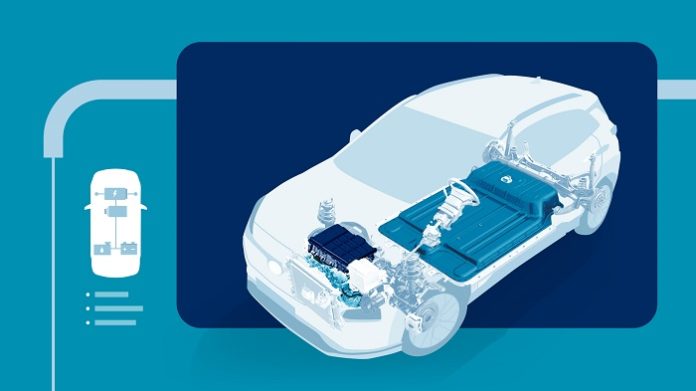Power electronics is enabling technology for the development of electric vehicle propulsion systems. The power electronics system consists of power switching devices, a power converter topology with its switching strategy, and the closed-loop control system of the motor. The selection of power semiconductor devices, converters/ inverters, control and switching strategies and system integration is very important for the development of efficient and high-performance vehicles. The challenges lie in obtaining a high-efficient, rugged, small size, and low-cost inverter and the associated electronics for controlling a three-phase electric machine. The devices and the other components need to withstand thermal cycling and extreme vibrations.
All the current EVs and HEVs use a three-phase bridge inverter topology for converting the dc voltage of the battery to variable voltage and variable frequency to power a three-phase ac motor. Three-phase hard switched bridge inverter is the topology that is being used in all-electric vehicles. This topology is simple and well-proven and continues to be the technology of the future with various types of power devices and the corresponding passive components for filtering, electromagnetic interference (EMI) reduction, protection, and so on.
With the advancement of semiconductor device technology, various types of power devices with changeable degrees of performance are available in the market. Currently, IGBT devices are being used in most of the commercially available EVs, HEVs, and PHEVs. The IGBTs devices will continue to be the technology in near future until the silicon carbide (SiC) and gallium nitride (GaN) based devices are commercially available at a cost equally to that of silicon IGBTs. A significant progress is already made in the technology of these devices for automotive and other power applications.
The potential areas for the deployment of wide band gap devices in hybrid and EVs are: propulsion inverter, on-board battery charger (EVs and PHEVs), and the dc-dc converter for converting the high voltage to 12 V dc. These devices have lower conduction and switching losses, thereby offering higher efficiency in electronic systems. Use of these devices in the propulsion inverter reduces the weight and size of the unit because of the requirement for lower cooling for the same rating of the silicon-based power converter. In HEVs, it would be possible to combine the cooling of the power converter device and the motor with the engine coolant loop operating at 105 °C, thus reducing to one coolant loop leading to further decrease in weight and complexity.
In addition to the power conversion and control of the propulsion motor, observing the conditions of the electric machine is very important in EVs to sense any failures such as bearing, stator, and rotor faults. By detecting the electric machine faults as soon as possible, the lifetime of an electric machine can be prolonged by performing maintenance before a disastrous failure occurs. Therefore, the EVs require embedded fault diagnosis systems both to provision critical functions of the control system and to deliver economical maintenance. Unless the electric machine and power train components are continuously observed, motor faults might cause permanent damage depending on the severity of the fault. The prognostics and health management are presently not being implemented in most of the EVs and HEVs. Integration of prognostics in the overall control system could expect the future performance of the machine by assessing the extent of its deviation from its expected normal operating conditions.








